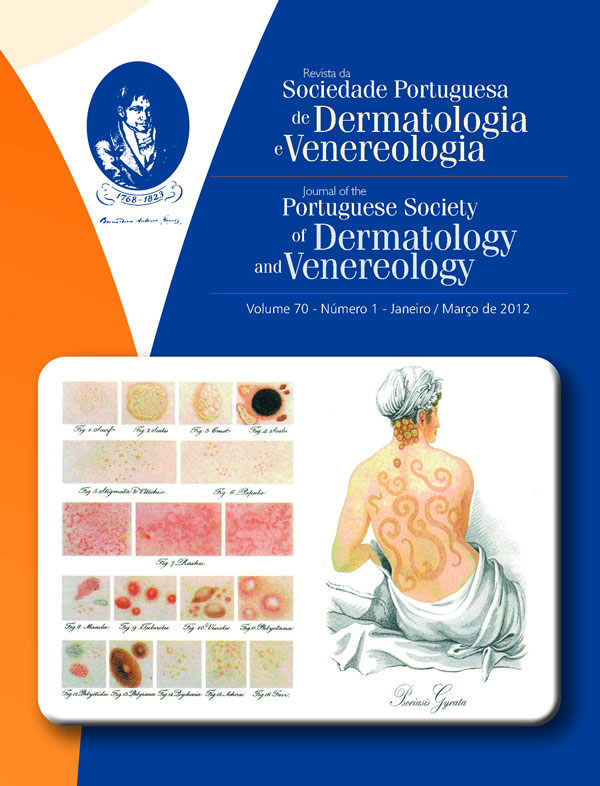LÍQUEN ESCLEROSO DA VULVA – REVISÃO DE 208 CASOS
Resumo
Introdução: O líquen escleroso (LE) é uma dermatose inflamatória crónica idiopática com predilecção ano- genital, sendo mais comum na mulher no período pós-menopausa.
Objectivos: Análise retrospectiva dos casos de LE vulvar diagnosticados e tratados na consulta de Patologia Vulvar, entre 1986 e 2004.
Material e Métodos: Um total de 208 caucasianas foi incluído no estudo. Foram consultados processos clínicos e realizado estudo estatístico das variáveis idade, localização, sintomas e sinais clínicos, associação com outras patologias, tratamento, follow-up e complicações.
Resultados: A duração média do LE foi de 6,3 anos. A idade média das mulheres à data do diagnóstico foi de 59,6 anos e à data do desenvolvimento dos sintomas de 53 anos. Cento e oitenta e duas (87,5%) encontravam-se no período pós-menopausa. O prurido foi o sintoma predominante (90,9%). Apenas 39 (18,8%) doentes não apresentavam atrofia vulvar e 142 (68,2%) não tinham envolvimento do intróito vaginal. O exame histológico confirmou LE em 185 (93,9%) e foi compatível nos restantes 12 (6,1%). O propionato de testosterona (PT) foi utilizado em 88 (42,3%) casos, os corticói- des tópicos em 24 (11,5%) e ambos em 76 (36,6%). O follow-up médio foi de 9,5 anos. Nove (4,3%) mulheres desenvol- veram CEC vulvar, sendo a idade média das mesmas ao diagnóstico de 68,2 anos.
Conclusões: O LE predominou no período pós-menopausa. O prurido e atrofia vulvar foram os achados clínicos mais frequentes. A maior parte dos casos foi confirmado por histologia. O PT tópico foi a arma terapêutica mais usada. A malignização ocorreu em nove casos.
PALAVRAS-CHAVE – Vulva; Líquen Escleroso; Propionato de Testosterona; Corticóides; Carcinoma Espinocelular.
Downloads
Todos os artigos desta revista são de acesso aberto sob a licença internacional Creative Commons Attribution-NonCommercial 4.0 (CC BY-NC 4.0).








